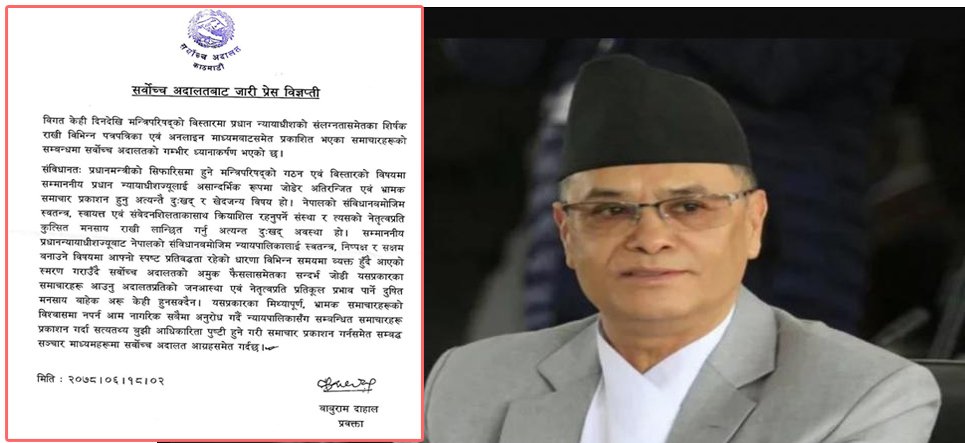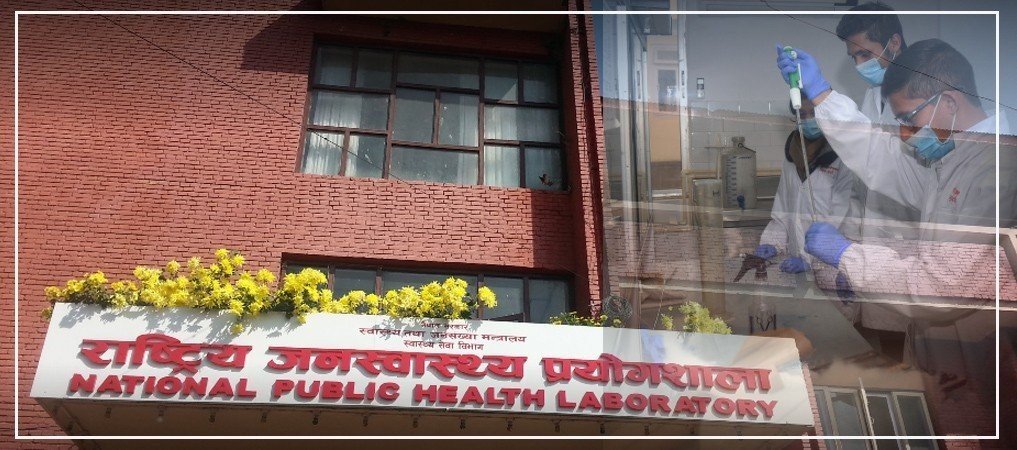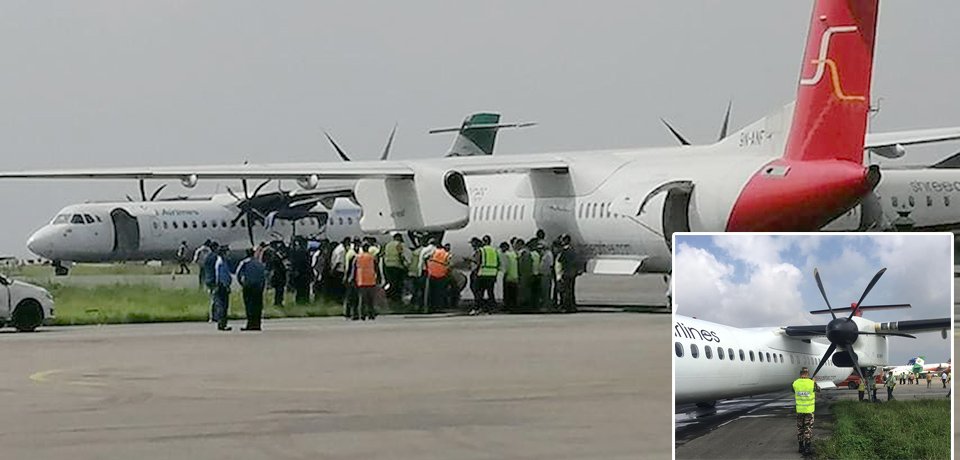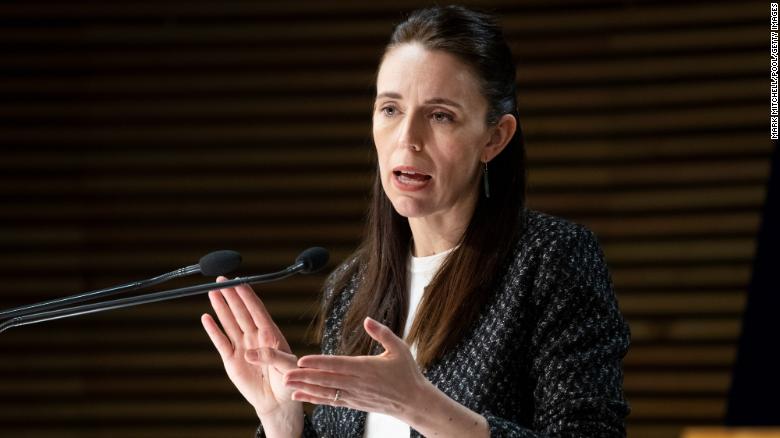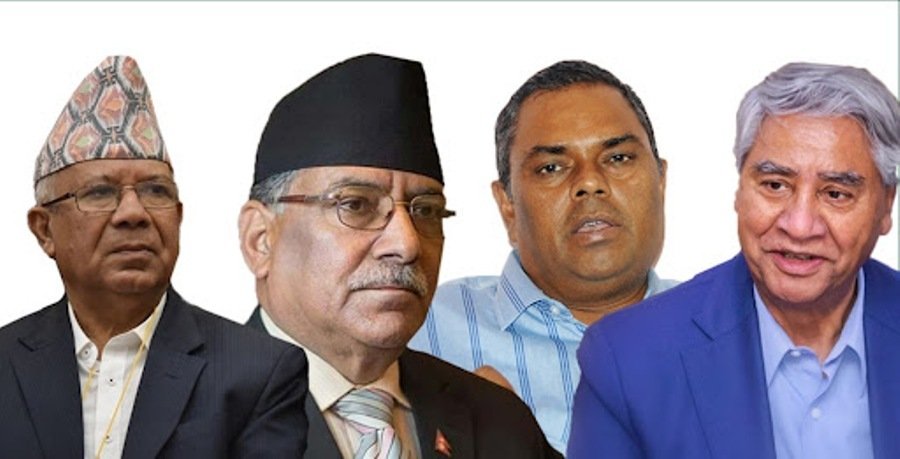'Only minor adjustment is made in budget'
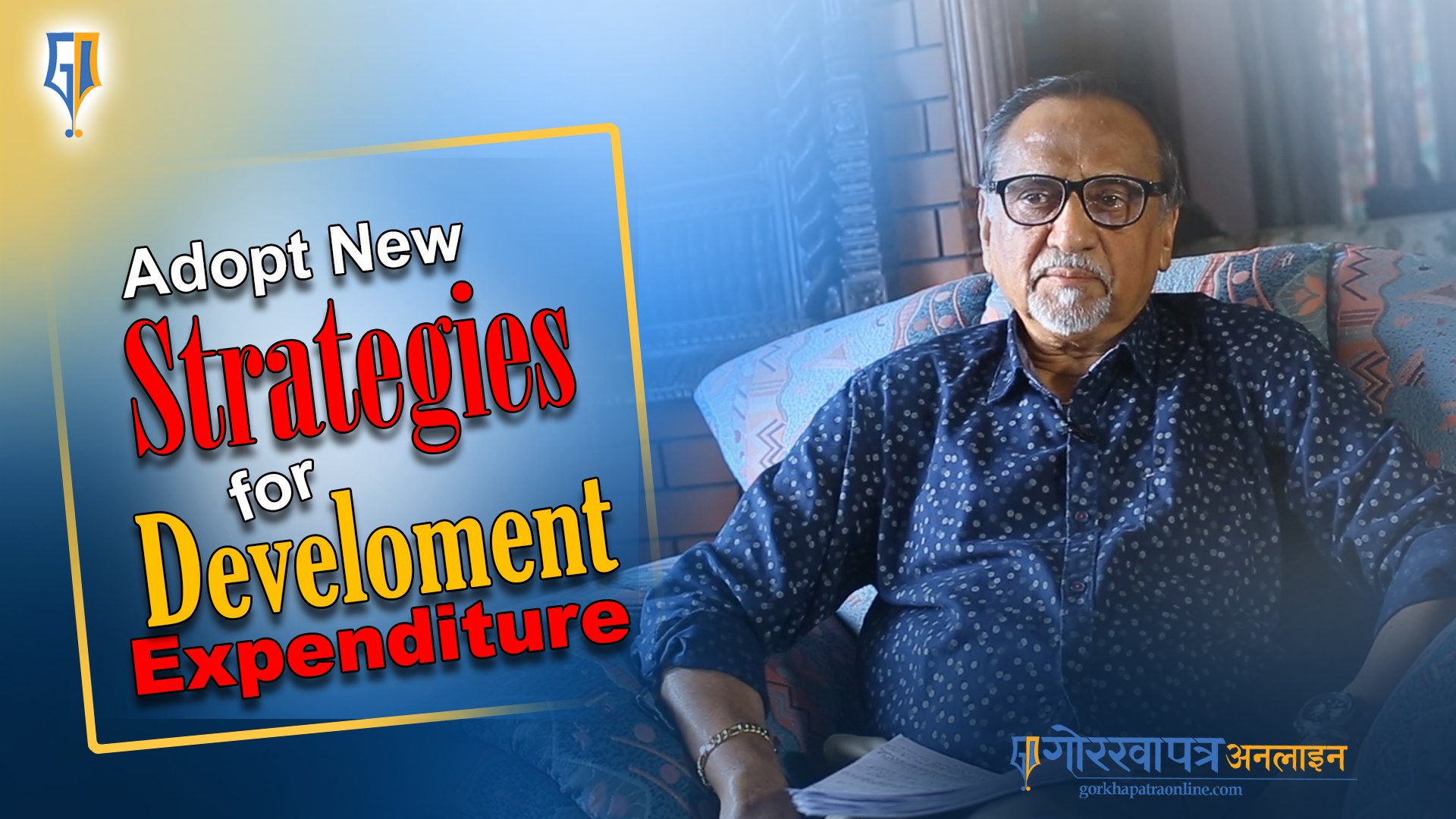
Prof. Dr. Bishwambher Pyakuryal is a renowned economist. He has also served as an ambassador of Nepal to Sri Lanka. In the present context of the endorsement of the replacement budget by the parliament and some controversies with regard to the MCC, Ajay Chhetri of the TRN Online talked with Prof. Pyakuryal on the related issues.
Excerpts:
A cursory read of the replacement budget endorsed recently by parliament gives a feeling that the Finance Minister is focusing more on capital expenditure than the financial and current. What is your assessment, sir?
So far as I understand, no major changes are made in the replacement budget than the earlier one presented by the Oli government. Minor adjustments are made which can be figured out if going through the white Paper the current Finance Minister had brought out.
When we talk about the budget, we should bear in mind that cumulative loss in the overall budget is higher, budget deficit is quite high, and both the domestic and external debt service liability is so high that it exceeds 40 per cent of the GDP. Nepali citizens at present bear the burden of Rs. 56 thousand as a debt.
I think some projects which were not demand based, which were included in violation of existing rules, regulations and norms of the policies, are scrapped in the new budget. My view is based on my discussion with the Finance Minister, chief economic advisor and media reports because not all adjustment is reflected in the Red Book.
Many of such budgetary adjustment don’t get reflected in the red book so it's difficult and too early right now to exactly tell you that amount.
There are a couple of projects like the Budhi Gandaki Hydro Project. Its feasibility study was done in 1984. There are projects which have not been moved forward although compensation for the land to be used by the project has already been given to the people. And, some of such projects have been named as national pride projects although what model would be applied for their construction is yet to be fixed. My point is, if these projects are not working properly, budgetary allocation in the annual budget is not justifiable.
If you simply hoard the liquidity but not roll it out, there is no chance that you will be increasing the percentage share of capital expenditure and annual expenditure and thus increase household income. If you could increase your strength to increase capital expenditure, then we can expect a fair amount of money being distributed in each household. When there is an increment in the household income, automatically consumer spending will increase. So the question arises of aggregate demand and supply. In this way you can make the economy resilient and rebound.
To conclude, I don’t think that major homework has been made while bringing in the current budget to bring about major changes in the structure of allocation of resources. Only those projects which were not too relevant are discarded. The other point to bear in mind is that foreign direct investment is trending downward. The debt service liability is increasing. So the government should be more concerned about managing debt service liability, because the problem lies in currency devaluation. We are fortunate that we have a fixed exchange rate. The IMF, ADB and other international financial institutions have estimated the growth rate in India a bit higher than even in mainland China. If the growth rate in India took off, it will have a trickle down effect, Nepal will get benefit because we have a fixed rate regime.
We don’t have production as such, tourism sector is gone and exceptionally high expenditure is made for health sector, and economy steadily slowing down. A "V shape recovery is a dream project, its impossible at least for the next 2 to 3 years. So whoever controls the power, they should look into three year prospective for our budget. Even in the highly developed countries during the South East Asian currency crisis of 1997 and 2008 global financial crisis, it took almost one and half years for shaping up employment regime. So in Nepal, I imagine, if things gets better, if there's a political stability , reducing frequent changes of government, transfer of chiefs, in that case, I think, in a fairly reasonable period, we can make an adjustment. We are victimized by two fronts now- externalities and domestic problem. Domestic problem is largely a result of political uncertainty and non-compliance of the rules and regulations. We are playing with the constitution. Globally, FDI and foreign aid component in the overall budget are declining, and more than 23 per cent of the annual budget depends on external assistance. But capacity to use that money is deteriorating.
Currently the most debated issue is the capacity to make a good capital expenditure. What would you like to suggest to increase capital expenditure?
Yeah, there are lots of things that we should really consider for increasing capital expenditure. Many of the donor communities were worried and what they really did was they brought out one consolidated policy to help Nepal, you know, the standard operational procedure. Based on that procedure, if you spend money earmarked in the budget, some hope would be there to increase capital expenditure.
We read media reports about how capital expenditure is obstructed, for instance, 20 per cent mobilization fund taken by contractors have been used elsewhere. I have a long list of projects which environment impact assessment and feasibility study have not been done but budget has been earmarked because of political pressure. This results in time and cost overrun. When you cannot finish the ongoing project on time this happens. Let's take the case of the Melamchi, initially we thought it should not exceed more than Rs. 46 billion but now it has exceeded more than Rs. 80 billion and the project got delayed by 6 years in execution. So there is a time overrun in most of Nepal’s very important projects and thus a cost overrun. The kind of cost overrun we have at the moment is not even comparable with the other the South Asian countries.
We have 22 national pride projects, more than 240 P1 P2 projects. It surprises me when I think about those projects vis-à-vis how secretaries and ministers with authority over the projects get transfer frequently, which affects expenditure on the projects. This calls for downsizing P1 and p2 projects.
The question is how to balance between human life, saving human life and economic recovery. Even the national pride projects which are lying idle for decades have not been doing anything good to create employment opportunities, to increase income people, to create demand for investment. But such projects also get budget. This is a development tragedy. So, number one: we should minimize or downsize the number of national pride projects and P1 P2 projects. Number two: those people who fail to utilize funds allocated even after getting full authority to use should be penalized. Number three: standard operational procedure developed on the basis of consensus among different funding institutions in this country together with the government should be implemented.
Globally in any project, you say it's a good project if you will have 8 to 10 per cent internal rate of return. In Nepal, key projects and some micro hydro projects have higher internal rate of return than the global average. It's good. So we should learn lessons. We spend billions of rupees for capital expenditure, for national pride projects, in the name of P1 and P2 projects where fund is 100 per cent guaranteed but we don't to try to find out multiplier effects such projects creates in the economy i.e. how they will contribute to increase income and employment and what is internal rate of return they will make.
If you spend a billion rupees for any project, there has to be a growth of GDP by one billion but there is no response at all. Often time, I tell my friends, my colleagues, and the media that there are structural rigidities in Nepal’s economy. For instance, for some years we have been successful in reducing poverty but not to decrease income inequality. There was growth for three consecutive years before the earthquake of 2015, we maintained 7 per cent growth. The growth had nothing to do with employment opportunities. We have world class monetary policy but it failed to contain inflation. See, you increase salary and wage rate but this does not show impact. Salary and wage rate hike is not responsive to increased productivity. Poverty reduction is inelastic to income inequality, growth cannot create employment opportunities, and monetary policy cannot contain inflation, so what is happening in our economy? Therefore we got to break this vicious circle. Why standard economic understanding, microeconomic understanding failed in Nepal? Why growth failed to create employment opportunities, why poverty alleviation cannot reduce income inequality, why monetary policy cannot give relief to the people in consumption goods? These are the things that we need to look into. So, we have not done any homework on multiplier effect, we have done nothing to find out the internal rate of return. If we do that homework then there is some hope that, based on benefit and cost analysis, we would precisely know what are the most prioritized sectors and what level of budgetary allocation is required and what kind of special policy changes are required. And, those people who conduct research are the hated persons in our political regime.
Let's talk about the National Planning Commission. It makes periodic plans and suggests an annual budget. Do the annual budgets that different governments present reflect on periodic plans?
The National Planning Commission gives you a threshold that the budget should not exceed an x amount of money. Because of the political pressure and a host of other externalities, the Ministry of Finance prepares the budget without the prior consent of the NPC or if they have consent, they represent the same political party.
Political parties or politics have overshadowed significant economic regimes. Actually, we learnt a very good lesson during the COVID-19 pandemic. We accepted wholeheartedly that it was the time for the central bank to play its role as per the Nepal Rastra Bank Act 1992. However, its activities remained much limited.
Its role was to simply contain inflation. But now what has happened? Governments have come up with expansionary fiscal policy. This budget, current budget, and the previous one were based on expansionary fiscal policy. Because you earmarked money in several projects, you spent more money than what you expected initially. In health expenditure, percentage growth is dramatically increased. We have been receiving loans. We have been receiving grants for the health sector. Tourism sector is gone. So, if you don't rehabilitate the tourism sector which was contributing significantly to the GDP, a potential sector for GDP growth will be gone. So economic stress is there, health problems are escalating, and developing health infrastructures, for treatment, for construction, for purchase of required medical appliances you need more money. So you are compelled to go for the expansionary fiscal policy. So if this happens, there has to be some mechanism so that you can guarantee the people that you will be well fed two times a day, because of the expansionary fiscal policy you will not lose spending capacity. The central bank controls money supply. But, it's been changing frequently. When there is a liquidity crunch, they use, for instance, repo, when there is excess of liquidity not to create inflationary pressure, they go for reverse repo, so mope up liquidity, when there is excess liquidity. You provide loan to the commercial banks in concessional interest, so a lot of monetary instruments have been prepared these days to reconcile expansionary fiscal policy. This monetary policy we have at the moment is actually accommodative monetary policy or fiscal policy is expansionary fiscal policy. So unless they work together, the economy will suffer.
Similarly, in regard to national planning commission, ministry of finance and central bank, I think any leader who comes as a ruler, my request to them is choose governor of central bank, vice-Chairman of planning commission and finance minister from same party.
One more common question is, does political party ideology influence periodic plans?
Yes, of course.
How effective is our economic diplomacy and how can we use that to bring more FDI in Nepal?
The problem is in coordination. We recommend investing in Nepal. There is no 'one single, one window' sort of institution. Although there has been decentralization, it is only in principle, because there are dozens of policies that need to be changed for decentralization in a real sense.
If potential investors visit Nepal based on the recommendation of ambassadors, consular generals of Nepal living and working for different countries, there has to be some mechanism to take care of them and listen to them. And we lack such a mechanism.
Placing the right people in such a mechanism is also important. With regard to economic diplomacy, as a former ambassador, my experience is that the ambassadors hardly get any response from the line ministry when they submit reports. During my tenure, I had submitted 22 different reports but didn't get a response back home. I request the present government make major changes in policy level, so that whoever comes next, she/he should follow. We need some major policy changes in foreign relations.
What is your take on the way the government is handling some international projects, specifically the Millennium Challenge Corporation (MCC) and the Belt and Road Initiative (BRI)?
Many international projects were handled by this country in the past. But this MCC, I sometimes really wonder as to why it became so controversial. Understandably, the more you delay in taking decisions the more complications you invite. Concerns have been raised on a couple of issues in the agreement. Many countries who backed out of it had first discussed those issues and when there was some sort of agreement, they made an agreement to implement the MCC. But in our case, an agreement has already been made with a commitment that this will get endorsed from the parliament. But discussion has started after the agreement. Critical appraisal of the agreement has set in. Thus we have lost our credibility. The MCC, from headquarters in Washington DC, have had discussions with four different ministers. Preliminary work was done before BRI was established in 2012 and in 2017 it was agreed. So, I also had the opportunity to meet visiting diplomats, high ranking officials from the US, and for a couple of times, with the present US ambassador to Nepal also. What they say is that changes in an already completed agreement are not possible. If Nepal doesn't like it, they can back out. And they also add: if there are some important issues that Nepal thinks the US government should consider, then there is some hope but we cannot guarantee.
Some of the concerns might be addressed in a different way. So there is some possibility for minor changes. But this could happen only when we table the bill.
The previous Oli government has already registered MCC at the parliament, so the responsibility of this government is to table the bill so that there is an open discussion. Allow parliament to discuss, if a majority of lawmakers endorse it, it's done, and if it fails, we have to back out. But there will be a lot of implications.
As you are aware, there is a Nepal development forum, composed of several donor countries and international financial institutions. The World Bank alone handles more than 80 per cent of external assistance for Nepal. So, the WB analysis in Nepal's economic future counts. The US has a high stake in the WB. The US president appoints the WB President. If the US is annoyed because of the MCC, Nepal will have implications. Even China has officially said several times that China will have no objection if the Nepalese strongly feel that MCC is beneficial for the country, any foreign agreement is beneficial for the economy.
Similarly, the US government is not against the BRI. So we make a guess that China has exerted pressure. What I want to see is this, the government should table the bill on the MCC or the MCC, give opportunity to parliamentarian to discuss it, consult with scholars, those with favor and those with against, and vote for it, if a majority rejects it then tell the US government that we couldn’t endorse it. But they are not doing it, this is what makes the US officials worried.
Can we think of our economy without remittance given its contribution in several sectors?
At least for five to ten years, it will be difficult to imagine the sustainability of the economy without remittance. self-sufficiency in the priority sector is important. We have undermined it for the last several years. Even basic consumption goods are being imported, there has not been trade facilitations, for instance, the number of negative lists that we had when we traded with China, has been dramatically narrowed down. But still export is much less than what we have with India.
We should try to find out the binding constraints that have obstructed the Nepalese products to penetrate in Chinese market. Why we have a trade deficit with China, you know, is because we lack competitive products.
Let me talk about palm oil. We import raw material from a third country, add some value in it and then export it to India. We told the government that this is risky. Out of total trade income, Palm oil alone represents more than 26 per cent. There were restrictions by India. Remember, we had a trade treaty during the time when IK Gujaral was the Prime Minister of India. Accordingly, we had free access to the Indian market. There were five products that went to the Indian market. There were no quantitative restrictions and tax tariffs. Most of the factories were established looking to the Indian market. But when India thought that their domestic market had been injured, restriction was imposed. They imposed quantitative restriction, value addition components. So, trade benefits were gone. So, people got worried. Now, we are thankful to the Indian government for opening up their market. But you have to try to find the most economically, most competitive products that can penetrate into the Indian and the Chinese markets. Until now, the amount you pay for your import in raw material and machinery is less than the income you gain from your export. But if you go categorically, the kind of products we import, the export value is much less than the cost of import.
There had been research of migrant returnees by international institutions. More than 70 per cent of the returnees want to start agri-business while the remaining 30 per cent want to utilize the skill they learnt abroad and do similar business. But both the lack of financial and market access create impediments to them. This calls for our heed to transportation facilities, some subsidy in fuels, so it will help cost competition in comparison to the Indian products.
Not only financial access but market access is another problem. We have to look into these areas from a policy perspective. If there is political certainty, a lot of things can be done. Taking care of 30 million people is not a big deal with current resources. We are fortunate enough, we have different climate zones. We have seven key sectors and we know which sector to create employment opportunities. We know which sector has employed how many people. I was going through the statistical information, I found out 1.18 percent employment is generated in last ten years in the manufacturing sector. Every year we have 700 thousand new entrants in the labor market. We exactly know what the potential sectors in the economy are and how many people are being employed at the moment. If the government and financial institutions collaborate with the private sector, employment can be created and agriculture can be developed.
Recent News

Do not make expressions casting dout on election: EC
14 Apr, 2022
CM Bhatta says may New Year 2079 BS inspire positive thinking
14 Apr, 2022
Three new cases, 44 recoveries in 24 hours
14 Apr, 2022
689 climbers of 84 teams so far acquire permits for climbing various peaks this spring season
14 Apr, 2022
How the rising cost of living crisis is impacting Nepal
14 Apr, 2022
US military confirms an interstellar meteor collided with Earth
14 Apr, 2022
Valneva Covid vaccine approved for use in UK
14 Apr, 2022
Chair Prachanda highlights need of unity among Maoist, Communist forces
14 Apr, 2022
Ranbir Kapoor and Alia Bhatt: Bollywood toasts star couple on wedding
14 Apr, 2022
President Bhandari confers decorations (Photo Feature)
14 Apr, 2022



